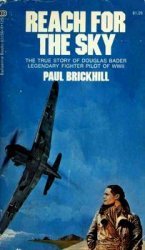South Pass is a route across the Continental Divide, between the northern and southern Rocky Mountains. Part of the Oregon Trail, California Trail, and Mormon Trail, it was used by overland immigrants from the 1830s to the late 1860s.
Although Native Americans had known of South Pass for centuries, the first Euro-American to use it was Robert Stuart and a group of Astorians, who were returning eastward from Astoria on the Oregon Coast in 1812. Stuart’s discovery was ignored, since trading companies at that time viewed transcontinental travel as more difficult than travel by sea. In opening up the trade of the Pacific Coast, John Jacob Astor primarily used sea vessels. With the close of the War of 1812, fur traders and explorers resumed overland travel. In spring 1824, Jedediah Strong Smith and a party of trappers used the pass, apparently after being informed by a Crow Indian of the easy route across the Continental Divide. Smith recognized the significance of the pass for the fur trade: Furs and supplies could be moved this way across the Rocky Mountains and in so doing avoid the dangerous route via the upper Missouri River. William Henry Ashley subsequently used South Pass to bring supplies to the rendezvous in 1825.
South Pass, as used by the fur traders and later overland travelers, was a gentle slope at the southern end of the Wind River Mountains. A broad, high plain, some 20 miles wide, it in no way resembled the image of a jagged gap in a mountain range. Travelers followed the Sweetwater River to its source and then continued up the gradual rise, to a height of 7,550 feet; a few miles later, the waters flowed west. Overland travelers confided in their journals that they found the “pass” something of a disappointment, although they came to appreciate its easy access across a formidable mountain barrier.
In 1830, Jedediah Smith and his trading partners informed the secretary of war that South Pass offered easy access to the Oregon Country. At a time when the issue of Oregon was still a contentious one (later settled by the Oregon Treaty of 1846), South Pass provided an important means to move settlers and supplies into this contested region. In 1832, Captain Benjamin Bonneville brought wagons through the pass, thus demonstrating the trail’s usefulness for settler families traveling to Oregon and California. Four years later, Narcissa Whitman and Eliza Spaulding, going west as the wives of missionaries, were the first white women to cross South Pass.
By the late 1830s and early 1840s, annual wagon trains of several hundred settler families went overland to Oregon by way of South Pass. In 1843, the federal government dispatched John C. Fremont to explore routes to the West, but Fremont’s well-publicized expedition added nothing to the accepted consensus that South Pass was the best route to Oregon and the Pacific Northwest. It soon also became the standard route to California.
With the discovery of gold in 1848, California became a national obsession, and the numbers on the overland trail grew in like proportion. In 1849, some 75,000 Forty-NINERs crossed the pass in a single season, and annual numbers thereafter remained high. The large number of diaries and travel accounts of the gold-seekers and the numbers of published accounts established South Pass— along with Fort Laramie, Independence Rock, the Humboldt River, and Sutter’s Fort—as a landmark in the great overland pioneering experience. Mormons, who also used the trail to the Utah settlement of the Church of Jesus Christ of Latter-day Saints, joined the argonauts on the way west. Although the Mormons continued to use the overland trail, with its variations to Salt Lake City, until the completion of the transcontinental railroad in 1869, by the middle of 1850s, many California-bound migrants had shifted to the sea route. Between 1836 and 1853, some 160,000 overland migrants used South Pass.
Further reading: John D. Unruh, The Plains Across (Urbana: University of Illinois Press, 1979).




 World History
World History









